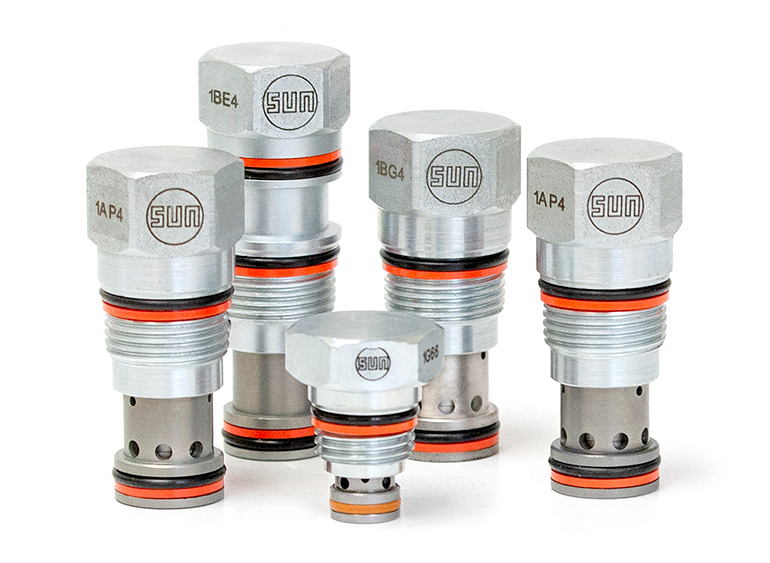By Josh Cosford, Contributing Editor
Check valves are the most basic form of directional valve. In their simplest form, a check valve has the singular task of allowing flow in one direction while blocking flow from returning in the opposite direction. These valves are not only simple in their operation but also simple in their construction. An inexpensive version requires little more than a steel ball inside of a housing.

From an application standpoint, the check valve offers three primary roles — directional control, protection and pilot control. As a directional control component, the check valve may be used in a circuit with two discrete sub-circuits, such as an unloading circuit. A fixed displacement pump may be used to operate closed center valves, at which point an unloading valve is used to prevent wasted energy as flow exhausts through the relief valve. The check valve is installed between the pilot operated relief valve and the downstream circuit. The pilot for the relief valve picks up downstream of the check valve so that when the directional valve closes, the pressure rise unloads the relief valve at low pressure.
As a safety device, the check valve is important when there is separation between an area of high pressure and one of low pressure. One such circuit is the accumulator, which often employs the use of two check valves. Because hydraulic energy is stored with extreme potential for sudden release, designers must be sure the energy cannot manifest quickly or in areas detrimental to machine performance. Accumulators work best attached to flow control valves, which use a check valve to ensure flow must pass through the needle valve at reduced velocity, while still able to charge up rapidly past the check valve. Check valves also protect the pumps from harm or leakage, so it makes for good practice to install check valves after the pump to prevent any backflow.
Advanced hydraulic systems use load sensing pumps capable of producing flow and pressure close to the actual machine requirements with little wasted energy in the form of pressure drop. However, their sophisticated operation requires the signal from the work ports closest to the actuators so the load sense controllers measures the difference between load pressure and pressure drop. The check valves are used in a network so their pilot signals run in parallel with only the highest signal making it through to the controller, which forces closed the remaining check valves in the network.
Although the simplest check valve uses a ball and spring to push against the seat of a 2-way ported body, poppet valves are the most efficient and reliable of the designs. Considered “leak free,” these designs take advantage of the large metal sealing surface of the conical poppet valve and the seat and offer reliable operation even at high pressure.
Check valves are manufactured for inline plumbing applications, as cartridge valves for custom manifolds, and even as giant slip in cartridge valves capable of lowering thousands of gallons per minute. As well, the cartridge valves may be used in various forms, such as in the industrial sandwich valves.
Filed Under: Mobile Hydraulic Tips, Valves & Manifolds